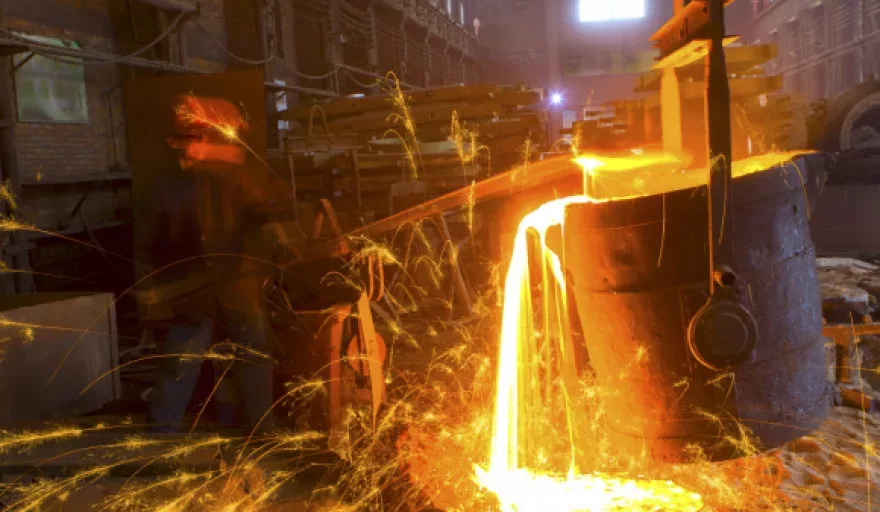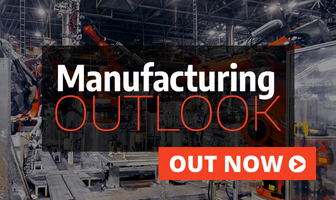The steel manufacturing industry in Europe has long been one of the main economic drivers contributing to growth, employment and fostering innovation across the Member States. Considered a world leader in environmental sustainability, the sector has a turnover of around €170 billion and directly employs 330,000 highly-skilled people, producing, on average, 170 million tonnes of steel a year, according to figures from The European Steel Association (EUROFER). With more than 500 steel production sites across 24 EU Member States, the sector has hugely significant ties with Europe’s wider manufacturing, engineering and construction industries and is considered “the backbone for development, growth and employment in Europe”.
Today, the industry is threatened by an industry downturn affected by a large number of variables caused in-part by lingering effects of the global economic crisis and marred by challenges linked to rising costs affecting availability of raw materials; in addition to the overarching pressures of energy, environmental and climate change regulations.
Adding to this huge amount of pressure is China’s current position, which, under the terms of the country’s “Protocol of Accession to the World Trade Organisation”, means it should be granted market economy status (MES) in December this year. There is still a big question mark over what this means for the EU, with many experts reporting that granting MES could threaten Europe’s steel and solar industries significantly. As a continent seen as especially vulnerable to Chinese dumping, Europe is in need of protection measures to mitigate further industry decline and hold-steady as the battle for industry survival intensifies.
THE OUTLOOK
According to EUROFER, the volume of Chinese steel entering Europe has nearly doubled over the past two years, despite an overall decrease in demand, hinting at the early warning signs of “massive job losses and plant closures” should MES be granted; something that the likes of Tata Steel is already experiencing as the industry belt tightens even for those who have existed for close-to a century.
Although steel industry growth in 2016-2017 is expected to be muted, following a two percent growth in total EU activity in 2015, there is much uncertainty and difficulty in predicting the future. “If China is provided with MES it will become more difficult for the EU to successfully deploy anti-dumping laws in response to alleged unfair trade practices by China,” commented Stephen Olson, Hinrich Foundation in a recent opinion piece on the topic (East Asia Forum).
Essentially, what this means is that it will become more acceptable for China to export its products to another country at low prices in order to gain a share of the market.
“The EU’s decision on China’s MES would be complex and would have a large impact under any circumstances. But, unfortunately, it has been further complicated — and the stakes raised even higher — as a result of surging Chinese steel exports to the EU,” Olson added.
Conversely, based on 2015’s boost from a growth in private spending translating into strengthening demand for passenger cars and electrical domestic appliances, and new residential housing projects, the steel industry could well shield itself from decline and retain sustained but slower growth levels in the coming few years. EUROFER further highlighted: “Prospects for 2016 and 2017 are relatively positive… Construction activity is expected to gain momentum as the recovery in demand becomes more broad-based. Tube and mechanical engineering sector activity will stop acting as a drag on total growth in steel-using sectors.”
At this point, it is worth reiterating the sheer scale of Europe’s steel industry and the subsequent threat to economies. The EU is the second largest producer of steel in the world after china, accounting for 11 percent of global output and forms a key part of the Member State’s action plan goal to increase the industry’s share of GDP to 20 percent by 2020. According to the EU, “Steel demand remains 27 percent below pre-crisis levels and up to 40,000 jobs have been lost in recent years. To help the European steel industry confront these challenges and return to pre-crises production levels, the Commission adopted an Action Plan on the competitiveness of the steel sector in 2013 and proposed the formal creation of a High-Level Group on Steel”.
The goal of the Action Plan is further challenged when you consider that the UK, a significant contributor to the aforementioned 20 percent GDP target figure, is teetering on the edge of a Brexit. Great Britain leaving the EU would leave some permanent changes to steel trade in its wake.
“Steel is the most versatile industrial material in the world. The thousands of different grades and types of steel developed by the industry make the modern world possible. Steel is 100 percent recyclable and therefore is a fundamental part of the circular economy. As a basic engineering material, steel is also an essential factor in the development and deployment of innovative, carbon dioxide-mitigating technologies, improving resource efficiency and fostering sustainable development in Europe” – EUROFER
EXCESS CAPACITY
The industry outlook clearly depends on two major factors: firstly, encouraging further diversification of activities in line with where demand is coming from, simultaneously capitalising on the growth in private spending; and secondly, whether China being granted MES can be regulated so as to limit overcapacity and further market saturation.
Speaking ahead of the sixth European Steel Day held by EUROFER in April, EUROFER President Geert Van Poelvoorde said: “Our top priorities are: dealing with global overcapacity – particularly in China; the modernisation of Europe’s Trade Defence Instruments (TDI); no granting of Market Economy Status (MES) to China until the country meets the EU’s market economy criteria; an effective and pro-competitive revision of the European Union Emissions Trading System (EU ETS); and the creation of a circular economy in Europe that accounts for the permanent and 100 percent recyclable properties of steel.”
The theme of this year’s event was ‘Building a Future as Strong as Steel’, which captured the strategic importance of steel to the EU economy. The event coincided with EUROFER’s 40th anniversary and was an opportunity for the European steel industry to highlight its priority challenges.
“Excess steelmaking capacity is one of the greatest challenges of our time”, said Mr Van Poelvoorde. “Global excess capacity is presently in the order of 700 million tonnes; about 400 million of this is in China. The country’s leaders must face the reality that their excess capacity is damaging the global industry’s prospects and is triggering the rollout of tit-for-tat anti-dumping measures across the world.”
On the other hand, Olson is of the belief that China is facing its own economic challenges that have inevitably led to overcapacity on Europe’s shores, citing that granting China MES does not need to cause a clash with the EU and insisting that “now is a time for cool heads and long-term perspectives”. He stated: “Chinese officials have conceded that ‘excessive allocation of resources’ and ‘unreasonable intervention’ by local governments (which are eager to keep local factories humming) have made it difficult to trim excess industrial capacity. That excess capacity is now rolling ashore in the EU, at the precise time the MES issue is being considered.”
DISTORTED MARKET
With apparent steel demand in 2017 forecast to grow, albeit mildly, supported by a more pronounced rise in real steel consumption and an overall more balanced stock cycle, the EU must hang tough and make sure that its legislative policies provide a level playing field for the steel industry; placing sustainable development, investor certainty and predictability at the top of its agenda. However, global overcapacity and sluggish prospects for global steel demand could easily translate into continued supply distortions and derail this modest recovery and future goals.
“European steel is globally competitive when faced with a fair market. In the presently distorted market, we call on European policy makers to do more, to quickly and effectively defend their strategic steel industry,” emphasised Mr Van Poelvoorde on European Steel Day in April. “However, we also remind our Chinese counterparts: accountable as they are for the world’s greatest and fastest widening gap between domestic demand and supply, that it is their responsibility to commit to meaningful net capacity reductions and ensure that state intervention in their steel sector is put to an end.”
“The situation is very serious,” concluded Mr Van Poelvoorde. “All countries’ steel industries are facing real challenges today. What we need is a real commitment on overcapacity from all international governments, who each have an interest in the sustainability and viability of their steel sectors.”
EUROFER further summarised: “Early indicators and available data for 2016 point to diverging prospects on the most likely course of EU economy in the future. The key question is whether domestic tailwinds will be strong enough to offset external headwinds. Domestic demand appears to be holding up well, but stuttering global economic activity and particularly bleak prospects for demand from China and commodity producing countries in the emerging world will limit export growth and result in net trade acting as a drag on GDP growth.”
Read the full article in the latest issue of EME Outlook here.




















